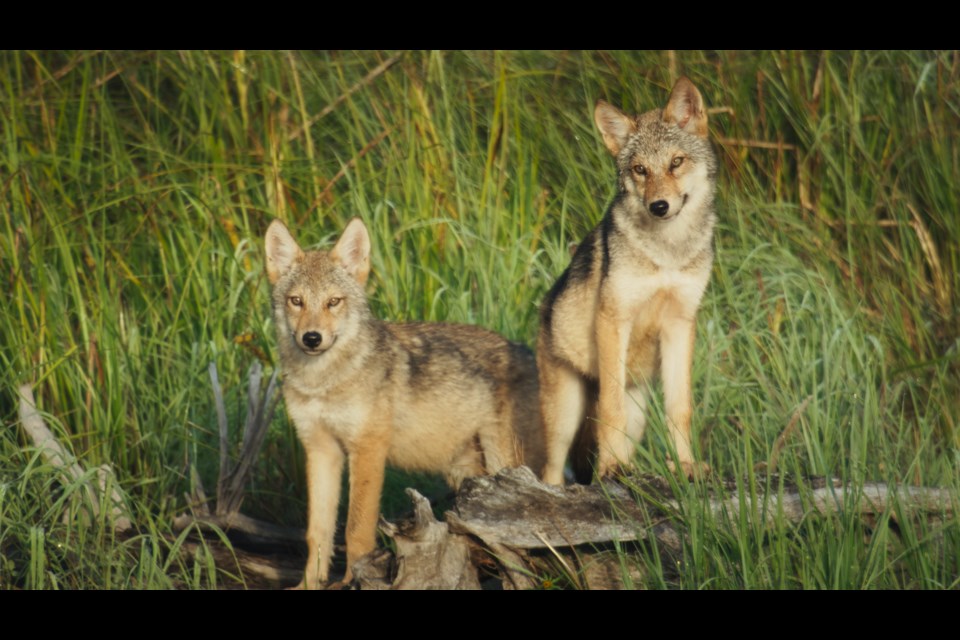A new series has premiered on CBC and CBC Gem, unveiling the mesmerizing world of animal soundscapes through "Secret World of Sound," a three-part Nature of Things Special. From the deserts of Arizona to the rain forests of Malaysia, the series explores how animals utilize sound to navigate their environments and communicate with one another.
Executive Producer and Writer Dugald Maudsley shares insights into the making of this series saying, "Most Natural History documentaries that focus on animals really look a lot at beautiful pictures. The sound is kind of second fiddle." He adds, "The idea that we would look at animals and their behaviour, starting with sound was really fascinating."
The series debuted on February 15th with the second episode set to air today (February 22).
In the upcoming third episode, titled "Finding A Voice," which airs on February 29th, the series takes a closer look at Algonquin Provincial Park, offering viewers in North Bay, a special connection to the narrative. Maudsley highlights the episode, saying, "The eastern wolves that live there are pretty amazing."
This episode delves into the critical role of sound in the survival of wolf pups, shedding light on their communication methods. Maudsley emphasizes, "Not only is it used as a warning system as a way of communicating over long distances, but it's also a way of making the pack cohesive and keeping the pack together."
To capture the intricate sounds of the wolf pack, the production team employed cutting-edge audio technology. Maudsley explains, "The big challenge was being able to capture that behaviour on camera because an awful lot of the stuff that happens takes place at night. They hunt at night, they interact at night. But at a certain time of year, they have to leave their pups in these rendezvous sites because the pups are too big for the den but too young to experience a hunt so there's actually pups out and about during the daytime when they can be seen.”
Maudsley says, “We worked with a naturalist named Michael Runtz and his partner, Britta. They clocked over 13,000 kilometres of driving and walking over five weeks to help us find these rendezvous sites and then to be able to alert our camera guy, Hugo Kitching, who was able to get in there and capture these images and these sounds.”
Maudsley says it was an arduous process at times, “They had to crawl in through the bush quietly because the wolves were easily spooked. Hugo just being there over and over and over, he was able to capture all the elements of the story, including the arrival of a black bear, which is one of the animals that will kill wolf pups. The pups use their voice, they use sound to deal with that emergency, that life or death situation. It takes time and prep and some good luck to tell these stories.”
Utilizing state-of-the-art equipment such as acoustic cameras and vibrometers, the series unveils the hidden world of animal communication across the globe. Presenting the focus on sound through a visual medium posed unique challenges and opportunities for the production team. Maudsley describes their approach, saying, "We really did our best to put that sound up front, we spent a long time track-laying layer after layer of sound."
Maudsley further elaborates on the intricacies of animal communication, highlighting the fascinating behaviours observed throughout the series. He says, "There are a lot of species out there, probably more than 200,000, that communicate using vibrations that we can't even hear." He emphasizes using specialized equipment like the vibrometer, stating, "It was the vibrometer that allowed us to listen in on that."
The production team's dedication to capturing the essence of animal soundscapes is evident in their meticulous approach. Maudsley discusses the incorporation of sound recorders into the fieldwork, noting, "We had sound reporters in the field, which was unusual." This hands-on approach allowed for a deeper understanding of animal behaviours.



